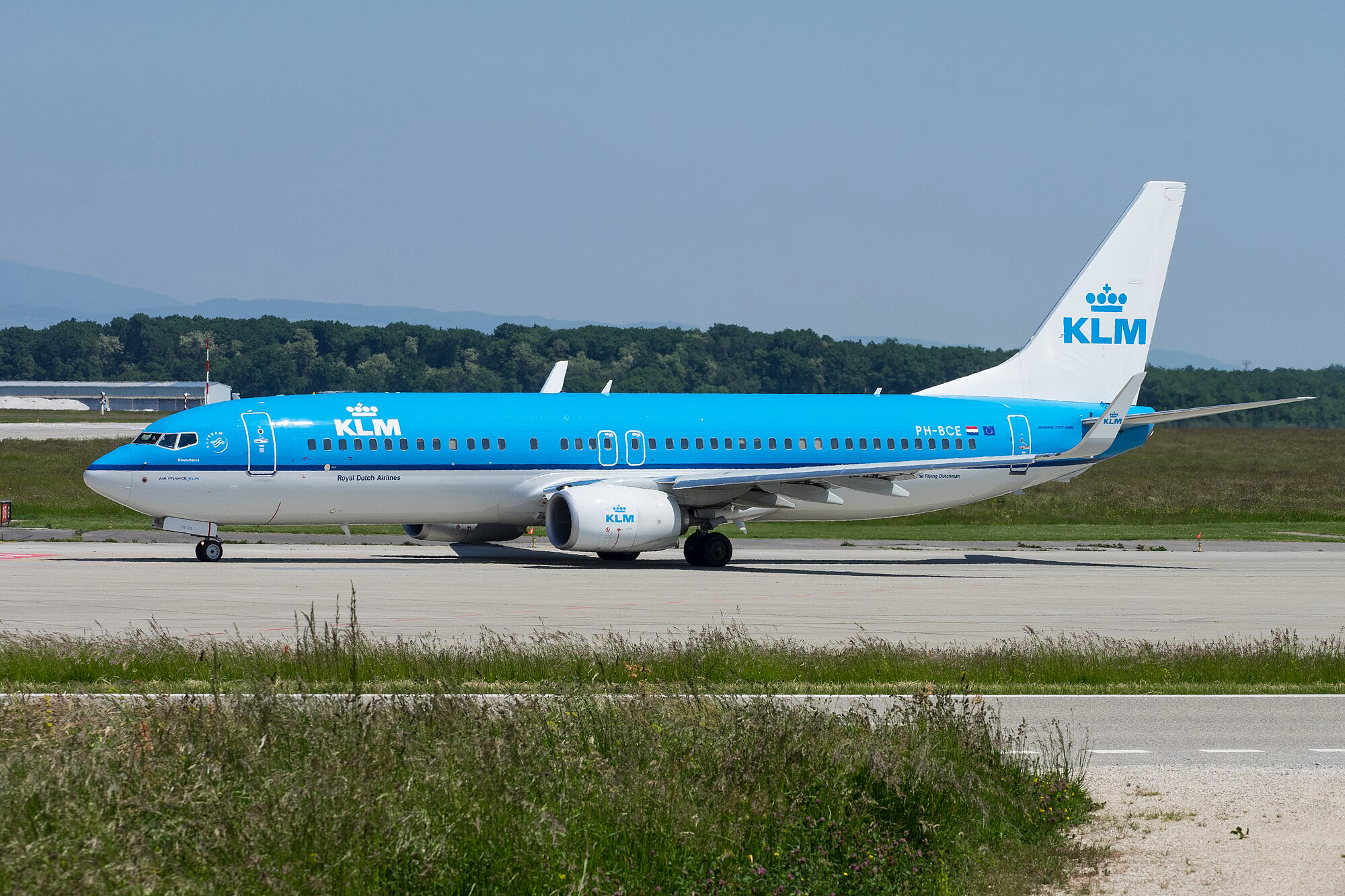Incident Summary
Date: April 26, 2025
Location: Amsterdam Schiphol Airport (EHAM), Netherlands
Aircraft: KLM Boeing 737-800, registration PH-HSD
Flight Number: KL933
Route: Amsterdam (AMS) to Edinburgh (EDI)
Occupants: Unknown number of passengers and crew
Injuries: None reported
Damage: Minor
Nature of Event: High-speed rejected takeoff due to suspected tyre failure or foreign object impact
Sequence of Events
At approximately 11:00 local time on April 26th, 2025, KLM flight KL933, operated by a Boeing 737-800 registered PH-HSD, was cleared for departure on runway 36L at Amsterdam Schiphol Airport en route to Edinburgh, Scotland. Weather conditions were reported to be VFR (Visual Flight Rules) with moderate surface winds.
During the takeoff roll, as the aircraft passed approximately 110 knots indicated airspeed — a speed considered close to V1 — the flight crew heard a loud bang. Simultaneously, cabin crew and passengers reported a flash visible on the starboard side of the aircraft. The flight crew initiated a high-speed rejected takeoff procedure and safely brought the aircraft to a controlled stop on the runway.
Initial communications from the cockpit to Amsterdam Tower indicated suspicion of a tyre failure or possible ingestion of foreign object debris (FOD). The crew reported that although they heard a bang and passengers reported a flash, aircraft systems had not indicated any immediate anomalies.
The aircraft vacated the runway via a high-speed exit and came to a complete stop. As per emergency protocol, both engines were shut down to allow emergency services to conduct a runway-side visual inspection of the aircraft’s undercarriage and external components.
No smoke, fire, or structural damage was observed by first responders, and after a brief assessment, the crew restarted the left-hand CFM56 engine and taxied the aircraft back to the stand under its own power.
Immediate Operational Impact
Runway 36L was temporarily closed for inspection following the rejected takeoff. Amsterdam Airport operations temporarily delayed other departures and arrivals while runway surfaces were checked for debris. The closure lasted approximately 20 minutes before the runway was cleared for use.
KLM quickly dispatched a replacement Boeing 737-800, registration PH-BCD, to perform the scheduled service. The flight ultimately departed with a delay of just over two hours and arrived in Edinburgh without further incident.
Aircraft Status
The aircraft involved in the incident, PH-HSD, remained grounded at Schiphol for further inspection by KLM’s technical maintenance team. According to operational data, the aircraft returned to service approximately 20 hours after the occurrence, suggesting minimal damage was sustained and no major repairs were necessary.
No injuries were reported among passengers or crew, and the airline has not issued a formal statement pending further internal review.
Technical and Safety Considerations
High-speed rejected takeoffs (RTOs) are rare and are treated with the same operational seriousness as inflight emergencies due to the inherent stress placed on aircraft systems, particularly the braking system and tyres. Initiating an RTO above 100 knots requires rapid decision-making by the flight crew and precise aircraft handling to prevent runway excursions or brake overheating.
Although the crew suspected a tyre issue, no specific failure (such as a burst or delamination) has yet been publicly confirmed. Flash reports from passengers may also suggest the possibility of FOD impact or brake-related sparks, but neither theory has been substantiated by KLM or the Dutch authorities as of the time of writing.
Given the proximity to V1, the decision to abort takeoff was likely made within seconds, highlighting the importance of vigilance, CRM (crew resource management), and decisive action in flight-critical phases.
Follow-Up and Investigation
There has been no official statement from the Dutch Safety Board (Onderzoeksraad voor Veiligheid) indicating a formal investigation at this stage. However, per standard EU-OPS and EASA reporting regulations, any high-speed RTO involving a loud bang or suspected component failure typically triggers at least an internal airline safety review and mandatory reporting.
Should any mechanical defect or surface condition be confirmed, further advisories may be issued by the operator or aircraft manufacturer.
Disclaimer
This article is based on publicly available information and reports at the time of writing. While every effort has been made to ensure accuracy, we cannot guarantee the completeness of the information provided.
If you are the rightful owner of any referenced content or images and wish them to be removed, please contact takedown@cockpitking.com.
